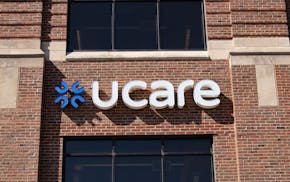Nikki and Jesse Roggenbuck moved into their first home just last month and already they've refurbished the bathroom. And Jesse, a carpenter, is working on refinishing the basement, converting it into a playroom for their baby and 4-year-old.
Former renters of a townhouse, the Roggenbucks are excited about making changes to their two-bedroom rambler in Columbia Heights. Best of all, "We're the only people who have a key," Jesse said.
The Roggenbucks became homeowners with financial help from two of the many state and federal programs designed to assist first-time home buyers.
The number of buyer assistance programs funded by federal, state and county dollars as well as nonprofit groups has risen, with some money funneled from government economic stimulus packages, said Ed Nelson, marketing and communications manager for the Minnesota Homeownership Center in St. Paul.
As with the Roggenbucks, first-time home buyer assistance programs are typically interest-free loans to be applied to a down payment and/or closing costs. That's because the upfront costs often can hinder potential buyers with low to moderate incomes from being able to buy a home.
"The ultimate goal is to spur home sales, stabilize the housing market and strengthen neighborhoods," said Nelson, noting that the wide range of assistance programs offer incentives for people to buy homes in Minneapolis and St. Paul as well as suburbs and towns statewide.
The road to home
Nikki and Jesse didn't race into homeownership. They knew they wanted to own a home someday, so they worked to improve their credit and save money. They also attended a Home Stretch home-buyer education workshop offered by the Home Ownership Center.
They also visited 15 houses before they bought their 1943 rambler for $118,000.
"I knew it was the house when we walked in," Nikki said. She liked the open floor plan, living room fireplace and basement expansion space. The home was in good condition and had a new roof and new mechanical systems. A bonus was a huge park two blocks away.
"We won't have to move again," she said. "The kids can grow up in this house."
In order to close the deal, the Roggenbucks received loans from two assistance programs. Nikki, who is a member of the White Earth tribe in Minnesota, found out about the Native American Homeownership Initiative (NAHI) from her mother and was referred by the Urban Indian Housing program to Karen DuCharme, a mortgage loan originator at Bremer Bank in Brooklyn Center.
The Roggenbucks received a $10,000 interest-free loan from NAHI, one of three Affordable Housing Programs offered by the Federal Home Loan Bank in Des Moines, and a $3,000, interest-free loan from the Minnesota Housing Finance Agency, which they used for closing costs and down payment on their FHA loan. The couple also can apply for the federal homebuyer tax credit of up to $8,000 which is part of President Obama's economic stimulus package.
"With the credit, the Roggenbucks will have a financial cushion for home repairs and maintenance," DuCharme said.
Bargain prices
The Roggenbucks' timing couldn't have been better. First-time buyers can reap the benefits of historically low mortgage interest rates and scores of bargain-priced houses, thanks to plummeting home values.
First-time buyers typically are looking for homes priced from $85,000 to $250,000, with the largest number of homes on the market falling in that range, said Deb Greene, an agent with Coldwell Banker Burnet and former president of the Minneapolis Area Association of Realtors.
And while the supply of homes overall is dropping (5.23 homes for sale per buyer compared with 7.33 last year), there's still plenty of selection, she said.
To help first-time buyers understand each step in the home-buying process, the Minnesota Homeownership Center holds pre-purchase home buyer education workshops held statewide. It also offers one-on-one counseling for consumers to learn the details of specific home buyer financial assistance programs.
"The workshops help people understand that homeownership is about a long-term investment, not a short-term vehicle to make money," said Nelson. "It's where you want to raise your kids and put down roots."
HOW THE ROGGENBUCKS FINANCED THEIR HOME
NATIVE AMERICAN HOMEOWNERSHIP INITIATIVE
The Federal Home Loan Bank also has two other home buyer assistance programs: the Urban First Time Homebuyer Fund and Rural Homeownership Fund.
Features: Interest-free deferred loans of up to $10,000 for NAHI and up to $5,000 for the other programs to help with down payment and/or closing costs.
Who is eligible? Low- to moderate-income families and individuals who meet income guidelines and have good credit. The home must be financed with a traditional fixed-rate mortgage. Buyers also are required to attend home buyer education classes.
Repayment: The loan balance decreases by 20 percent per year and the loan is forgiven after five years if the owners remain in the home.
Information: www.fhlbdm.com. Click on "Community Investment" to find out about the Affordable Housing programs.
MINNESOTA HOUSING FINANCE AGENCY
Features: Interest-free loans to help with down payment and/or closing costs.
Repayment: The loan is in the form of a second mortgage to be repaid when owners sell or refinance the house, pay it off or the home is no longer owner-occupied.
Information: www.mnhousing.gov.
Owner of exploding Michigan building arrested at airport while trying to leave US, authorities say
Surging auto insurance rates squeeze drivers, fuel inflation
